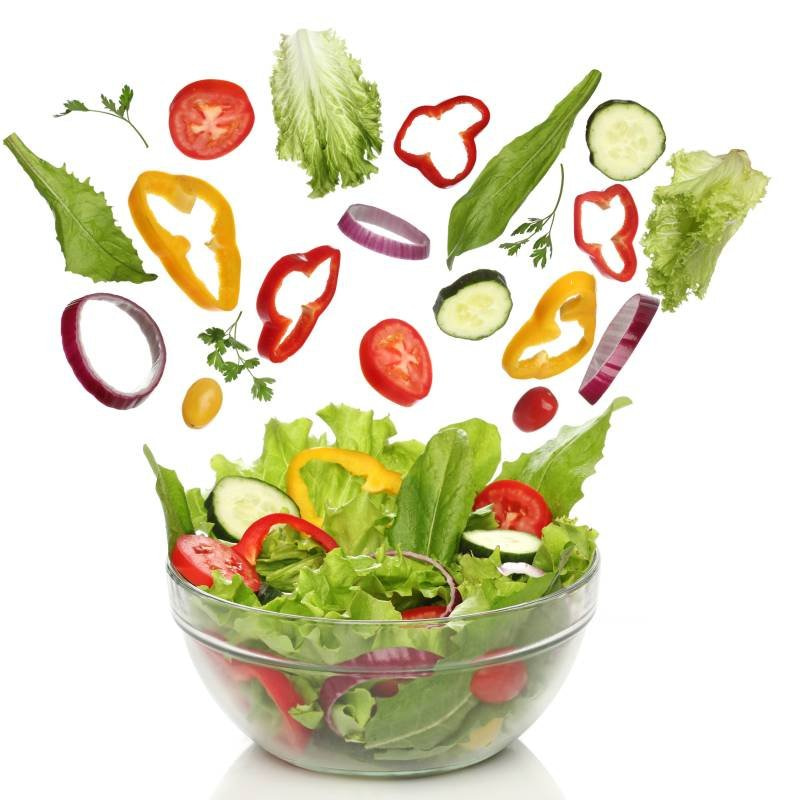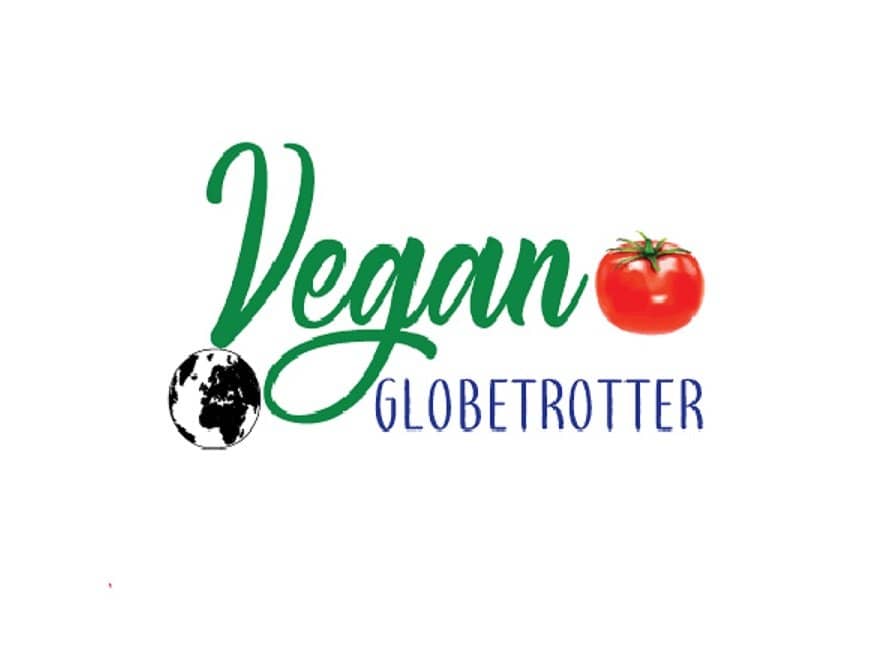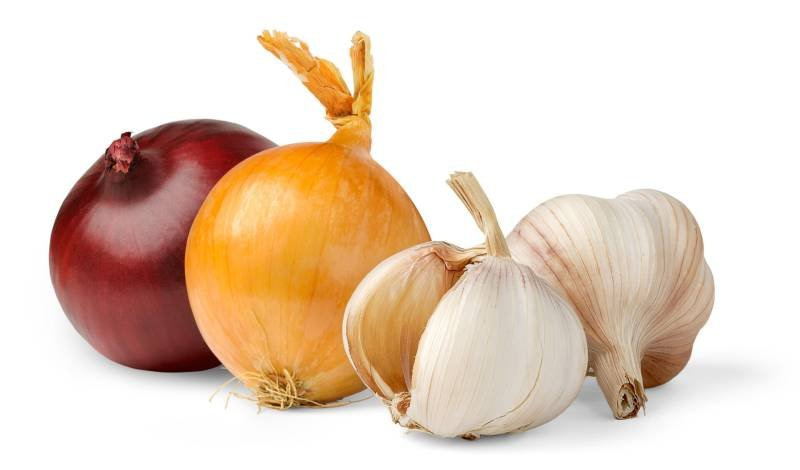Vegan Globetrotter is supported by our audience. When you purchase through one of our links, we may earn a small affiliate commission. As an Amazon Associate I earn from qualifying purchases. Your cost is not affected.
==================
8 Healthful and Aromatic Bulb Vegetables
These healthful and aromatic bulb vegetables are edible plants cultivated for the buds that develop and grow underground. They’re called bulb vegetables to distinguish them from the other types. Growing from the stem are scales or layers, not leaves, that store food supply. In other words, it’s a vegetable made up of translucent layers forming an ovoid shape like a bulb. At its base are the roots. And the new leaves and stems grow atop the bulbous part.
And so, what’s special about bulbs? They stay fresh longer than other types of vegetables. And they strengthen immunity, reduce the risk of cancer and heart disease, and combat inflammation.

A snippet of history…
Predating recorded history, it is believed that bulb vegetables were already known in emerging civilizations during that period, such as China, India, the Middle East, and the time of the American settlers and Indians.
Characteristics that most bulbs share…
- A lot of bulb vegetables have a thin layer of covering for protection
- Bulbs are typically rounded, or oval in shape, and the top side is where the real leaves grow
- The bulb’s inner or central core is the spot where its bud grows
- They generally have a pungent odor that is mild to strong.
- The bulb is the enlarged portion of the stem serving as the “food storage” of the entire plant for its growth and flowering.
Used as an ingredient…
Bulb vegetables commonly used in preparing salads and viands ears are onions and garlic. Because they provide the savory tastes preferred in many meals, such as piquancy and spiciness.
WHY BULB VEGETABLES ARE GOOD FOR YOU:
- Have cancer-preventing benefits
- Boost the body’s immune system
- Contribute to fiber in meals good for controlling cholesterol
- Bulb vegetables, like garlic, strengthen the lymphatic system ridding the body of harmful wastes
IN THIS GROUP:
- Chive (Allium schoenoprasum and Allium tuberosum, Liliaceae)
- Fennel (Foeniculum vulgare)
- Garlic (Allium sativum, Liliaceae)
- Leek (Allium porrum, Liliacea)
- Onion (Allium cepa, Liliaceae)
- Scallion (Allium fistulosum, Liliaceae)
- Shallot (Allium ascalonicum, Liliaceae)
- Water Chestnut (Eleocharis dulcis, Cyperaceae)
The 8 Healthy and Distinctive Bulb Vegetables

Fresh Chives
1 | Chives (Allium schoenoprasum)
Chives may be one of the easiest herbs to grow. It can grow well and multiply, and yet doesn’t require high maintenance. Every part is edible. Its versatility as a vegetable ingredient is so helpful. The hollow leaves that resemble grass are the parts that are used in many kinds of recipes. They have a milder onion taste and are added to omelets, salads, soups, and flavorings soups.
Chives as the source of nutrients, vitamins, and minerals
(Source: Foodstruct.com)
Glycemic Index 45 (low)
Calories 30
Net Carbs 0.065 oz. (1.85 grams)
Vitamin Content:
HIGH Vitamins A, Vitamin C
Minerals:
HIGH Iron
MODERATE Copper, Manganese
LOW Calcium, Magnesium, Zinc
Chives as a recipe ingredient…
Chives are customarily included in recipes as garnish. It doesn’t have the strong odor or “bite” of onions but rather a milder version of it. It does not overpower other flavors but complements them. Also, it adds color and texture to the recipe.

Fennel Bulbs
2 | Fennel (Foeniculum vulgare)
Fennel is a sturdy, perennial herb and a species of flowering plant under the carrot family. Its bulb and its dried seeds are used as vegetable ingredients in cooking. The oil extracted from the seeds, and the seeds themselves, have medicinal properties. Having a degree of alkalinity can offset the acidity of other foods, especially when an individual’s pH balance is out of whack.
Fennel as the source of nutrients, vitamins, and minerals
(Source: Foodstruct.com)
Fennel can provide relief to the colon. It also contains an estrogen-like property that is good for both men and women. Contrary to what people believe, estrogen and testosterone are present in both genders. Except that there’s more testosterone than estrogen in men and vice versa for women.
Glycemic Index 30 (low)
Calories 149
Net Carbs 1.48 oz. (42 grams)
Vitamin Content:
HIGH Vitamins A, Vitamin C
Minerals:
HIGH Potasssium, Iron, Manganese
MODERATE Copper, Phosphorus
LOW Calcium, Magnesium, Choline
Fennel as a recipe ingredient…
The fennel bulb, which is its base, is the part that’s usually added as an ingredient in cooking. Or paired as a side dish to the main course or entrée. Moreover, its long stalk, attached with fronds, can also be used for cooking. And with its slightly sweet flavor, it can be added to many kinds of recipes. Like in savory meals, desserts, salads, sandwiches, and soups.
Fennel’s taste is closely similar to the taste of licorice, only somehow milder. And it can be eaten raw or cooked. And if your recipe calls for a stronger fennel flavor, add a teaspoon of chopped or crushed fennel seeds.

Garlic Bulbs
3 | Garlic (Allium sativum, Liliaceae) WP
Garlic belongs to the group of flowering perennial plants, that is, they live year after year. It has a short stem from which thick, fleshy leaves grow. These leaves function as food storage for the dormant period of the garlic plant. The garlic bulb has a strong odor and holds at least 10 up to around 20 garlic cloves. These cloves are covered by thin leaves for protection. Depending on the location, blossoms with hues of pink to purple may appear.
Garlic as source of nutrients, vitamins, and minerals
(Source: Foodstruct.com)
First, the garlic cloves get peeled, crushed, or chopped. The moment we chew food with garlic in the mouth, that’s the first step in releasing the nutrients from the food, including allicin, and continues all the way down to stomach and the gut system.
Allicin is a sulfur compound and together with diallyl disulfide and sallylcysteine, they are believed to provide health benefits. So, from eating garlic, the body gets those nutrients. From the digestive tract and through the bloodstream, they reach different parts of our system providing powerful healing and healthful benefits.
Glycemic Index 30 (low)
Calories 149
Net Carbs 1.09 0z. (30.96 grams)
Vitamin Content:
HIGH Vitamins B6, Vitamin C
Minerals:
HIGH Manganese, Copper, Selenium
MODERATE Iron, Calcium, Phosphorus
LOW Potassium, Zinc, Magnesium
Garlic as a recipe ingredient…
The cultivation of garlic and its incorporation in cooking goes a long way back. Probably thousands of years. Not only that, but it is used as a folk medicine in many cultures such as the Chinese, Egyptian, Greek, Japanese, and Roman. Having curative benefits, it has also become very useful in the art of cooking. First, it can be added to soups and broths. Second, in baking, braising, roasting, and sauteing, garlic is usually an essential ingredient. It can impart the right amount of zest and kick.

Leeks and chopped leeks
4 | Leek (Allium porrum, Liliacea)
A member of the onion family of plants, the leek is a cultivated variety or cultivar for short. Its edible part is always mistaken as the stem or the stalk. It is actually the leaf. Or to be precise, a collection or group of long, elongated leaf sheaths. And these sheaths are hollow, they’re like tubes. Together with garlic and onion, they are members of the plant genus Allium.
Leek as a source of nutrients, vitamins, minerals
(Source: Foodstruct.com)
Leeks are loaded with vitamins B and C, calcium and potassium, and enough chlorine, phosphor, and sulfur. Just enough to meet your ideal nutrient requirements. So, including leeks in your food plate induces the secretion of digestive juices, and also energizes the functions of the pancreas. It generally helps in the cleansing and maintaining our biological systems. By purifying the bloodstream and stimulating the digestive juices’ secretion, uric acid is controlled.
Along with these essential benefits to health, you can enjoy leeks as ingredients in your salad, and in your other side dishes, including soup. Now, let’s take a look at leek as an ingredient in your cooking.
Glycemic Index 32 (low)
Calories 61
Net Carbs 0.435 oz. (12.35 grams)
Vitamin Content:
HIGH Vitamin A , Vitamin C, Folate (Vitamin B9)
Minerals:
HIGH Iron, Manganese
MODERATE Copper,
LOW Magnesium, Calcium, Potassium, Phosphorus
Leek as a recipe ingredient…
Leeks could taste like onions, but only milder. That is good when the recipe calls for a less pungent aroma than onions. But unlike the round-shaped onion, leek is like a cylinder, as it is actually the stem. So, when cut cross-wise, they can add color to the recipe. And its piquancy is more agreeable to the palate. So, once you try it, you’d know it’s got a unique flavor. Its high nutritional content will surely benefit your health.

Red and White Onions
5 | Onions (Allium cepa, Liliaceae)
Onion is a versatile bulb that has many uses. Rich in ether oils, it’s the most extensively grown breed in the Allium family. When cut or sliced, its odor is intense, and somewhat irritates the eyes causing them to shed tears. But on the other hand, when inhaled carefully can unclog the nasal passages. That proves the penetrating power of its essence. Its strength makes it a preferred condiment in salads, sandwich filling, soups, and viands that could use a dose of umami flavor.
Onion as the source of nutrients, vitamins, and minerals
(Source: Foodstruct.com)
Onions are a great source of nutrients such as biotin, calcium, copper, folate, and iron. Also, manganese, phosphorus, potassium, and vitamin C. Its water content is 85 percent or more. Additionally, they provide essential compounds like flavonoids, polyphenols, and sulfur. They’re also full of carbohydrates and fiber. So, it helps protect and fight cancer because of its quercetin content. Plus, the organic sulfur compounds in onions cut down cholesterol level. And since heart disease and stroke can be fatal, onions lower the incidence of stroke and heart ailment. That’s due to the onions’ ability to break down blood clots.
Alzheimer’s disease is also a dreaded illness that can be licked by consuming lots of onions, which are full of flavonoids. Diabetes, a lifestyle and a frightful illness, could be controlled by quercetin and sulfur compounds which onions are full of.
Glycemic Index 30 (low)
Calories 149
Net Carbs 0.269 oz. (7.64 grams)
Vitamin Content:
LOW Vitamins B6, Vitamin C
Minerals:
HIGH
MODERATE Calcium, Magnesium, Potassium
LOW Choline, Iron, Selenium, Sodium, Zinc
Onion as a recipe ingredient…
Onions lend a flavorful taste to many viands, recipes, veggie salads, bread fillings, and many more. Just imagine how easy and tasteful to have onions caramelized, sauteed, pickled, roasted, and even grilled.

Green spring onion scallion
6 | Scallion (Allium fistulosum, Liliaceae)
The white bulb and the long green shoots growing out of it are both edible. And Its taste is milder and sweeter than onions. They grow and thrive all year round with spring and summer as the peak seasons. And in many Chinese and Mexican recipes, they are the regular vegetable ingredients.
Scallion as the source of nutrients, vitamins, minerals
(Source: Foodstruct.com)
Glycemic Index 32 (low)
Calories 32
Net Carbs 0.167 oz (4.74 grams)
Vitamin Content:
HIGH Vitamins A, Vitamin C, Folate (Vitamin B9)
Minerals:
HIGH Iron Manganese
MODERATE Copper, Potassium, Calcium, Manganese
LOW Phosphorus, Magnesium, Zinc
Scallion as a recipe ingredient…
Scallions are a favorite vegetable added in many cooking, particularly in Asian and Latin American recipes. They enhance not only the flavor but also the look of the food, And that contributes to the pleasurable dining experience. Fully grown scallions with larger bulbs as well as young whiter scallions and their shoots are both used for cooking.

Fresh Shallots
7 | Shallot (Allium ascalonicum, Liliaceae)
Shallot is a botanical and cultivated variety of onions. That’s why it has not much difference from onions. So, it also belongs to Allium, which is the onion genus in which chives, the Chinese onion, garlic, leeks, and scallions belong to. Shallots also come in different colors from pinkish-red to golden brown. When you cut it open, the flesh is tender and pulpy and mostly white with hints of green.
At first glance, an onion and a shallot may look almost the same. But here are their differences. They are more tender than onions. They get cooked rather quickly. And onions have a more pungent taste.
As a bulb vegetable that’s almost like an onion, the taste is a mix of sweetness and spiciness. When eaten, the first burst of flavor would be a strong, pungent heat. And after a few moments, you would taste a hint of sweetness.
Shallot as the source of nutrients, vitamins, minerals
(Source: Foodstruct.com)
- Contributes to lowering cholesterol level
- Contains anti-cancer property
- Protects agains viral infection
- Normalizes blood pressure
- Boost circulation
- Helps in controlling diabetes
Glycemic Index 30 (low)
Calories 72
Net Carbs 0.479 oz. (13.6 grams)
Shallots contain protein, vitamin A, thiamin, niacin, vitamins B6, C, and K, and folate.
Vitamin Content:
HIGH Vitamins A, Vitamin C, Folate (Vitamin B9)
Shallots have the following minerals: calcium, potassium, iron, and magnesium. And only traces of the following: choline, phosphorus, zinc.
Minerals:
HIGH Iron Manganese
MODERATE Copper, Potassium, Calcium, Manganese
LOW Phosphorus, Magnesium, Zinc
Scallion as a recipe ingredient…
In cooking, scallions are a favorite vegetable ingredient and garnish in many cooking, particularly in Asian and Latin American recipes. They intensify not only the flavor but also the look of the food, which contributes to the pleasurable dining experience. Fully grown scallions with larger bulbs as well as young whiter scallions and their shoots are both used for cooking.

Water Chestnuts
8 | Water Chestnut (Eleocharis dulcis, Cyperaceae)
Water chestnuts grow indigenously in parts of Southeast Asia, particularly in China. It’s also called Chinese water chestnut, and it’s a staple plant-based ingredient in many Chinese cuisines. Although it’s called a chestnut, it is actually an aquatic vegetable. That means it thrives underwater, in mud, or in watery locations like marshes and other wetland areas. So, how come it’s called a water chestnut? It has thick brownish skin and a shape that looks like a chestnut, so it could be mistaken for one. But it’s not a nut but a bulbous plant part that serves as storage for its growth.
Water Chestnut as the source of nutrients, vitamins, and minerals
(Source: Foodstruct.com)
Glycemic Index 32 (low)
Calories 61
Net Carbs 0.738 oz. (20.94 grams)
Water chestnuts contain about 74 percent water with low-calorie content.
Vitamin Content:
HIGH Vitamins B6
MEDIUM Vitamin B2, Vitamin B
LOW Vitamin B5, Vitamin B3, Vitamin C, Vitamin E
Minerals:
HIGH Potassium, Copper;
MODERATE Manganese, Phosphorus;
LOW Calcium, Choline, Iron, Magnesium, Selenium, Sodium, Zinc
Water Chestnut as a recipe ingredient…
For a vegetable salad, other vegetables and stir-fried are mixed with water chestnuts retaining most of the nutrients. Other easy-to-prepare snacks included are appetizers with bacon, cheeses, ham, egg rolls, or fried mozzarella.
For main dishes adding fresh water chestnuts, both top and bottom should be cut off, the skin peeled away, and then washed before adding them. If fresh ones are difficult to get, get canned water chestnuts available in grocery stores. Lastly, to keep the crispy texture when cooking, add water chestnut ingredients near the end.
Takeaway
Knowing the kinds of vegetables according to the edible part would increase your interest in having them on your food plate. In addition, although the listed nutrient contents may not be easily retrieved from memory, just knowing that they’re healthful would be enough.
Keep in mind that foods like the healthful and aromatic bulb vegetables presented above are good for the heart, the gut, and mental health. Also, they contain lots of protein and trace nutrients. Moreover, onions, garlic, and scallions, for instance, do not only make our food flavorful, but they also provide us with lots of antioxidants. In addition, they fight inflammation, detoxify the body, and activate our immune system. The result: a healthier body, longevity, and a much better life.
READ MORE:







I never knew that therr are numours bulb vegetables out there!
It seems that we find those previously undiscovered wonders often and we truly enjoy them!